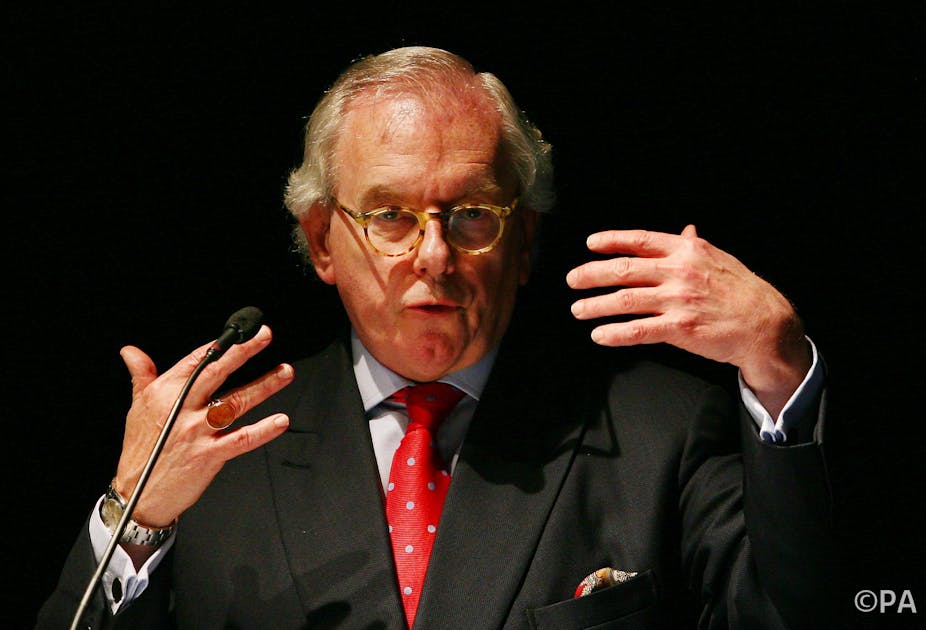A Telegraph column recently opined that “our brightest students should be ashamed of their intolerance” and demanded to know why “a lecturer at one of our most exalted universities [is] shutting down free speech?”
The column by journalist Jemima Lewis was in response to a campaign led by English lecturer Malachi McIntosh and black and minority ethnic students at Cambridge to stop the university using a promotional fundraising video in which the historian David Starkey, a Cambridge alumnus, was the key presenter.
The aim of the campaign was not to stop Starkey speaking, but to stop him from being used as the representative of the University of Cambridge. The petition was accompanied by a two-page argument about the effect that using Starkey to speak for Cambridge would have within an institution where 89% of people are “white-British” or “white-other” and only 0.6% are “black”, “black British African” or “black British Caribbean”.
It argued that his inclusion suggested that the university cared “very little about its appearance in the eyes of black and minority ethnic students and staff, current and future” and that it undermined daily efforts to make the university more inclusive.
Yet in the Telegraph and Observer commentary on the issue, complex ideas were inevitably ignored on how the participation of students in university life can be diminished by the ways in which their views are valued or dismissed.
More familiar narratives were offered, reinterpreting the campaign in terms of no-platforming policies and “pre-emptive” censorship, an incursion on Starkey’s right to express his views. The coverage of the issue revealed a worrying tendency in public discourse to present public efforts to challenge particular ways of thinking as “censorship”.
But it ignored the insidious and more harmful ways in which the threat of censure controls what is said and done everyday on university campuses.
Internal censorship
There is one type of censorship that is very obvious: we see it in banned and destroyed material, the state-sanctioned punishment of writers, speakers and performers. And there is a different kind of censorship that is internalised and invisible. It makes the speaker anticipate official supervision and societal censure and conform to an imagined community’s ways of thinking. Learned from the society where a speaker lives, it also reflects conscious and unconscious biases about who should speak, how they should speak and for how long.
What the campaign against Starkey’s inclusion in the video argued was that a university’s publicity materials can encourage internal censorship, encouraging potential applicants not to apply and students not to speak up.
A black student applying to a university which accepted the representation of Starkey as an archetypal lecturer, would be justified in wondering whether they would receive a hostile response to whatever they said at their admissions interview because of their skin colour.
In the aftermath of the London riots, Starkey’s comments on “nihilistic gangster culture” caused deep offence. The university has implied it does not think that Starkey’s views on race matter as long as he is “representing his affection” for Cambridge, casting them as merely “controversial statements”. In such a context, students and staff could be forgiven for thinking that speaking out against racism and drawing attention to explicit and implicit biases is pointless.
In a country where a Telegraph column casts critically conscious adults as “kids” talking “nonsense” and an Observer columnist dismisses a two-page argument in 300 words as “outrage-mush” of which students should be “ashamed”, how can the many students who led the campaign not absorb a lesson about how their speech must be moderated or depoliticised, in order to avoid being dismissed out of hand?
Across the UK, black and ethnic minority students have lower university admission rates than comparably qualified white peers. At Cambridge this is very marked. The university needs to do more rather than less to encourage applications from black and ethnic minority students and to make sure all potential students feel their voices will be heard and valued once they are here.
Free speech and argument
Formulating an argument, persuading 860 others of its validity – including several of those participating in the video – and using the authority that comes with all of that to help change university practice is in no way an illustration of censorship. Quite the contrary: it illustrates what the determination to maintain free speech can achieve in increasing dialogue.
There are many people in our society who have the freedom to hold opinions and to express them, but who have no power to voice their thoughts so that they are heard publicly. They lack a column in the Telegraph or the Observer, a place in front of a camera, a lectern in a lecture theatre.
Students and academics working together to make their voices heard is itself a manifestation of free speech, but more importantly it is about preserving a space for other voices within Cambridge. The campaigners were working together to make a simple point to current and perspective students: this man does not speak for us, do not anticipate our censure, we want to hear what you have to say.

